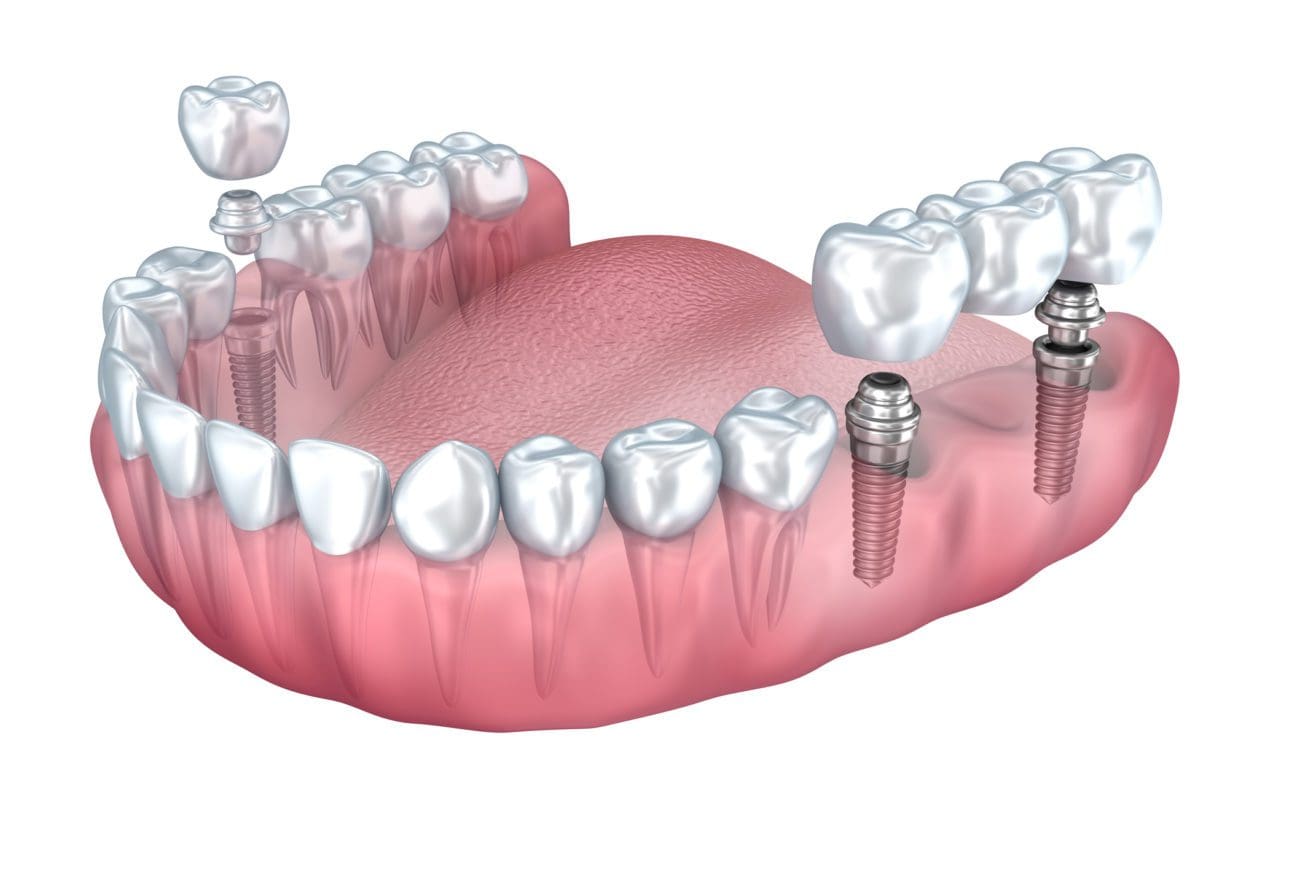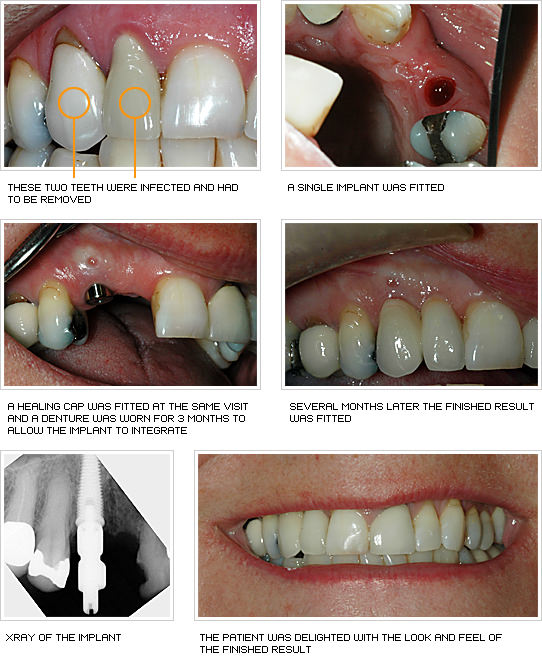The Greatest Guide To Dental Sense
The Greatest Guide To Dental Sense
Blog Article
The Greatest Guide To Dental Sense
Table of ContentsLittle Known Questions About Dental Sense.Dental Sense for BeginnersThe Ultimate Guide To Dental SenseDental Sense Things To Know Before You Buy
are medical gadgets operatively implanted right into the jaw to recover an individual's capability to chew or their appearance. They give assistance for fabricated (phony) teeth, such as crowns, bridges, or dentures. When a tooth is shed because of injury or illness, a person can experience difficulties such as quick bone loss, malfunctioning speech, or adjustments to eating patterns that lead to pain.Dental implant systems contain a dental implant body and oral implant joint and might additionally consist of a joint fixation screw. Front tooth filling. The dental implant body is operatively placed in the jawbone instead of the tooth's root. The oral implant joint is typically connected to the dental implant body by the abutment addiction screw and extends via gum tissues right into the mouth to support the affixed fabricated teeth
(https://myanimelist.net/profile/dentalsense1)Structure of The Oral Implant System choosing dental implants, talk to your dental company regarding the possible benefits and risks, and whether you are a candidate for the treatment. Points to take into consideration: Your total wellness is a crucial aspect in figuring out whether you are a great prospect for oral implants, for how long it will certainly take to heal, and how long the dental implant might remain in area.
Smoking cigarettes may affect the recovery process and reduce the lasting success of the implant. The recovery process for the dental implant body may take several months or longer, throughout which time you usually have a short-term abutment instead of the tooth. the dental implant treatment: Meticulously adhere to the dental hygiene instructions provided to you by your dental company.
The Best Strategy To Use For Dental Sense
Implant failing can lead to the need for one more surgery to deal with or change the implant system. Brings back the capacity to eat Brings back cosmetic appearance Assists keep the jawbone from diminishing due to bone loss Protects the health of the bordering bone and gum tissues Helps keep adjacent (nearby) teeth stable Boosts top quality of life Damages to bordering natural teeth during implant positioning Injury to the surrounding tissues during surgery, such as sinus opening Injury during surgical procedure (for instance, crack of surrounding jawbone) Poor feature, such as really feeling like the teeth do not bite together generally An experience that the tooth hangs or twisting in position arising from an abutment screw loosening Implant body failing (looseness of the dental implant body) as a result of systemic infection, which may be more probable in clients with unchecked diabetes due to neighborhood infection in bone and gum tissues sustaining the dental implant body as a result of postponed healing, which might be extra most likely in patients who smoke Difficulty cleansing the gums around the implant, causing inadequate oral health Neglected gum condition Post-surgical tingling as a result of nerve impingement or damage Constantly alert healthcare service providers and imaging professionals that you have oral implants prior to any magnetic vibration imaging (MRI) or x-ray procedures.
FDA is not familiar with any type of damaging events reported for MRI or x-ray procedures with dental implants. Dental implants systems are commonly constructed from materials that adhere to global agreement standards of the International Company for Standardization (ISO) or ASTM International. These standards have details of what makes a safe material.

An oral implant is a structure that changes a missing out on tooth. With screw-like tools, the specialist inserts a dental implant into the jawbone, and it acts as an anchor for a synthetic tooth, called a crown.
Our Dental Sense PDFs
Some individuals are not qualified for dental implant surgical procedure. It is for oral doctors to run on people with: intense illnessuncontrollable metabolic diseasebone or soft tissue disease or infectionIf these problems are fixed, a person can have the surgical treatment. In, dental doctors avoid operating on people with: If people with any one of the above undergo oral implant surgery, there is a higher risk of the implant falling short.

Oral dental implant surgical treatment is a personalized process. Provide you time to recover. Attach the post and final crown, bridge or denture.
Next, your cosmetic surgeon will thoroughly put the oral implant right into your jaw. If your dental implant is near the front of your mouth, your dental professional will make a temporary tooth for you to wear up until you heal.
Not known Facts About Dental Sense
Your service provider can tell you what to anticipate in your situation. During the recovery phase, your jawbone must fuse to the oral implant. This procedure, called osseointegration, is important for stability and long-lasting success. This procedure can take anywhere from 3 to 9 months. In some situations, it might take much longer.
As soon as your implant heals, your dental professional can attach the joint (tiny port post) and your final restoration (crown, bridge or denture). This normally takes regarding one hour to finish and may call for a second small surgery. You should not really feel any discomfort during your dental implant procedure since your provider will certainly utilize drug to numb your periodontals.
Report this page